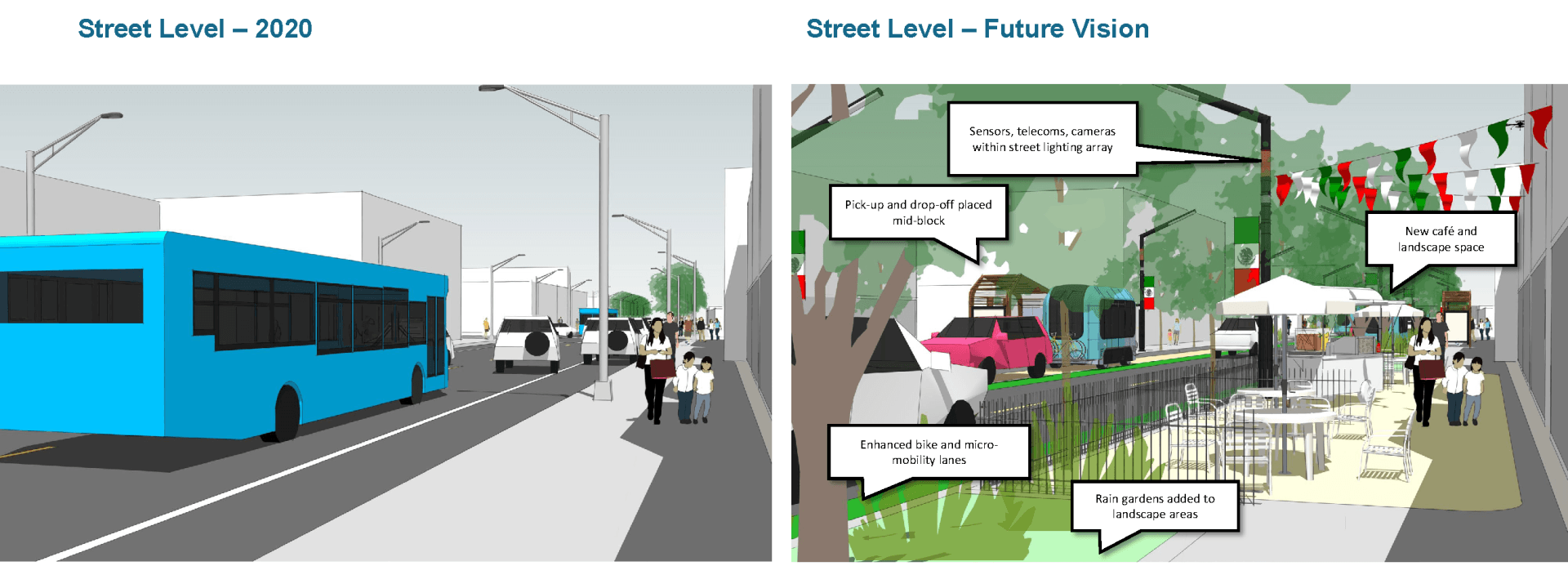This website was archived as of November 4, 2021. In Fall 2021, City Tech launched two new, independent organizations and announced open-source resources for direct resident engagement. Click here to read the announcement.
Blog Post
Streets of the post-pandemic future: Retrofitting city streets for 21st century needs
American City & County • Jul 07, 2021
Driven by this sense of urgency, cities have partially closed streets to create car-free spaces for pedestrians and cyclists. Restaurants and businesses have reimagined outdoor spaces to provide open-air, socially distanced customer experiences. And there’s been an increase in deliveries and curbside services, demanding new strategies at the street’s edge.
We’re also entering a new era of mobility. From hand-held technologies and remote sensing to on-demand and autonomous vehicles with optimal route selection, our streets will need to continue to adapt to meet this new future.
At the same time, we have certain expectations about what our streets should look like and how they should perform. In addition to connectivity within a broader transportation network to traffic management, site access and ensuring pedestrian and cyclist safety, we also want to generate economic development and vibrant public spaces. The beautification and landscaping of our streets also plays an essential role in reducing heat island effects and supporting local habitat.
Read the full article at American City & County.
